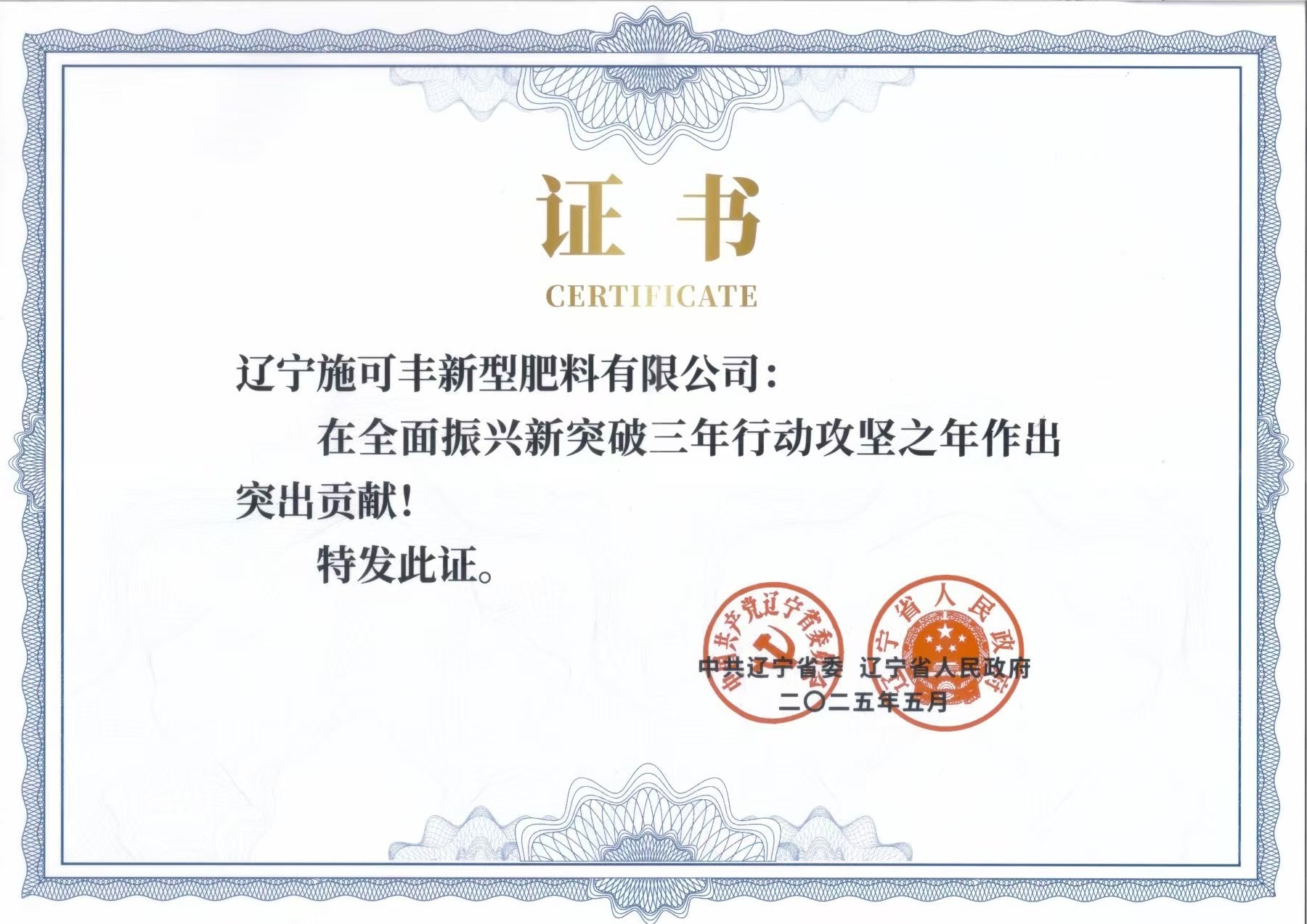NEWS
NEWS
14
2025
-
05
Shi Kefeng was awarded "Outstanding Contribution Enterprise in Liaoning Province"

On May 13, the Liaoning Provincial Enterprise Conference with the theme of "Promoting the High-quality Development of Enterprises and Helping New Breakthroughs in Comprehensive Revitalization" was held in Shenyang. Liaoning Shi Kefeng New Fertilizer Co., Ltd. won this honor, and general manager Liang Peishi was invited to attend the meeting as a representative of the "outstanding contribution enterprise" and accepted the commendation of the provincial party committee and the provincial government.
In recent years, Liaoning Shikefeng has taken green new fertilizers as the industrial focus, adhered to the whole industrial chain of phosphorus chemical industry chain to extend, supplement and strengthen the chain, focused on cultivating new quality productivity, and unswervingly promoted the high-quality development of enterprises. In 2024, Liaoning Shi Kefeng will achieve an operating income of 1.814 billion yuan, making outstanding contributions to the comprehensive revitalization of Liaoning Province in the new three-year action year.
In the next five years, Liaoning Shi Kefeng will continue to follow the development model of the whole industrial chain of phosphorus compound fertilizer. In the upstream of the industry, it will focus on promoting the phosphate mining and construction projects of the two mining rights of Beipiao Quanyi Mining and Beipiao Shengda Mining, as well as the comprehensive recycling project of 20 million tons/year of ultra-poor phosphorus and iron. After the project is completed and put into operation, it will have an annual output of 1.4 million tons of phosphate concentrate powder and 500,000 tons of iron concentrate powder, with huge economic benefits. In the downstream of the industry, it will focus on the development of 1 million tons/year of phosphogypsum and solid waste comprehensive utilization projects. In terms of horizontal development, we will comprehensively promote the "sulfur, phosphorus, iron and calcium" green and low-carbon recycling industrial cluster project of Shi Kefeng. The construction covers 300,000 tons/year of AZF process high water-soluble compound fertilizer, 800,000 tons/year of sulfur acid and 6,000kw waste heat recovery power generation, 100,000 tons/year of phosphoric acid concentration, 50,000 tons/year of urea phosphate, 30,000 tons/year of ammonium polyphosphate, 100,000 tons/year of iron phosphate, 10,000 tons/year of potassium pyrophosphate, ammonium pyrophosphate and other projects. Among them, the 300,000 tons/year AZF process high water-soluble compound fertilizer project has been put into trial production at the end of March 2025 and has achieved good results.
In terms of digital transformation, the company actively promotes the construction of "IoT and cloud platform intelligent factory". It mainly carries out intelligent upgrading and transformation of Liaoning Shikefeng production system, involving coating oil metering and control device system, palletizing automatic packaging system, automatic sampling system, intelligent warehousing system, intelligent access control system, 5G IoT and cloud platform system, etc. Effectively improve production efficiency and cost profit margin, reduce product defect rate and safety accident rate, create new opportunities for the high-quality and healthy development of Liaoning Shikefeng, and promote the enterprise to move towards digitalization and intelligence.
Liaoning Shi Kefeng Company continues to expand the extension of the industrial chain, which is conducive to driving the development of related industries, forming an industrial cluster effect, and will play a positive role in promoting regional economic development.
Relevant News



